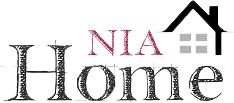Engineered hardwood flooring has emerged as a go-to choice for homeowners seeking the timeless beauty of hardwood coupled with modern performance and durability. This innovative flooring solution combines the classic elegance of natural wood with cutting-edge engineering techniques, offering a flooring option that enhances the aesthetic appeal of any space while standing up to the demands of daily life.
The Best of Both Worlds
Engineered hardwood flooring represents the perfect marriage of aesthetics and functionality. While traditional solid hardwood flooring is renowned for its beauty and warmth, it is susceptible to fluctuations in temperature and humidity, making it less suitable for environments prone to moisture, such as basements or bathrooms. Engineered hardwood, on the other hand, is constructed from multiple layers of wood veneer stacked in cross-grain patterns, which enhances its stability and resistance to moisture-related issues. This innovative construction method not only makes engineered hardwood more dimensionally stable than solid wood but also allows it to be installed in a variety of settings, including below grade and over concrete subfloors.
Versatility and Style
One of the key advantages of engineered hardwood flooring is its versatility in design. Available in a wide range of wood species, finishes, and plank sizes, engineered hardwood offers endless possibilities for customization, allowing homeowners to achieve their desired look and feel. Whether seeking the classic charm of oak, the rich hues of maple, or the exotic beauty of Brazilian cherry, there is an engineered hardwood option to suit every taste and style preference. Additionally, engineered hardwood can be installed using various methods, including glue-down, nail-down, or floating, providing flexibility in installation and allowing for seamless integration into any space.
Durability and Longevity
Beyond its aesthetic appeal and versatility, engineered hardwood flooring is prized for its durability and longevity. The multiple layers of wood veneer in engineered hardwood provide added strength and stability, making it more resistant to warping, cupping, and buckling than solid wood flooring. Additionally, the top layer, known as the wear layer, can be sanded and refinished multiple times, allowing homeowners to refresh the surface and extend the lifespan of their floors as needed. With proper care and maintenance, engineered hardwood flooring can last for decades, making it a wise investment for homeowners looking for a durable and long-lasting flooring solution.
Environmental Sustainability
In an era of growing environmental awareness, engineered hardwood flooring offers a sustainable alternative to solid wood. By utilizing less hardwood in its construction and incorporating renewable materials, such as plywood or HDF (high-density fiberboard), engineered hardwood helps to conserve natural resources while still providing the beauty and warmth of hardwood flooring. Additionally, many engineered hardwood products are manufactured using environmentally friendly practices and certified by organizations such as the Forest Stewardship Council (FSC), ensuring that they come from responsibly managed forests.
Engineered hardwood flooring represents the perfect synergy of beauty, performance, and sustainability in home design. With its versatile design options, enhanced durability, and environmental credentials, engineered hardwood flooring offers homeowners a flooring solution that combines the timeless elegance of hardwood with the practical benefits of modern engineering. Whether renovating a single room or outfitting an entire home, engineered hardwood flooring provides the perfect foundation for creating a space that is as beautiful as it is functional, elevating the aesthetic appeal and value of any home.


Comments are closed.